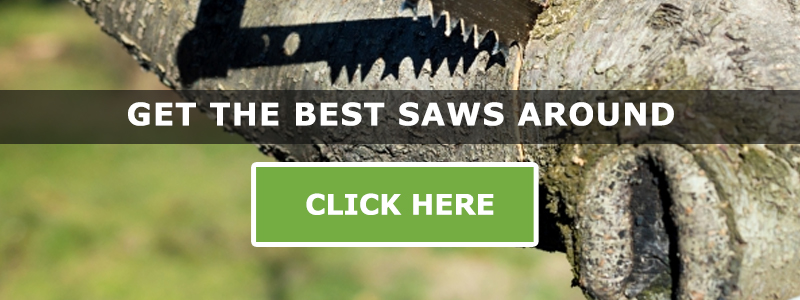
While there are parts of the country that never see snow, there are many of our customers to the north who are eagerly awaiting spring so that they can get back to their usual warm weather activities. But if you live in parts of the country with a lot of snow and trees that lose their leaves, it’s a good idea to order your tree tools sooner rather than later. When it comes to tree care, here are some ways that you should be prepared.
Water Throughout Winter
When trees lose their leaves, they’re going dormant. Some trees even have a type of antifreeze in their bark to protect them from the coldest temperatures. But, like Westley in The Princess Bride, the trees aren’t completely dormant...they’re mostly dormant. That means that the roots are still seeking out moisture in the ground during the winter months, helping to keep the tree alive.
If your particular part of the country is having a nice winter where there’s lots of snow that melts often and keeps the ground nice and moist, then you might not need to water. But if you’re in the middle of a snow drought and your trees aren’t getting much water, it’s probably a good idea to break out the hose and soak the ground on a warm winter day. (Just don’t turn on the sprinklers, because then you have to blow them out again!) If you want to get the water deeper into the ground so that it doesn't run off onto the sidewalk, consider using a lawn spike aerator.
Will your tree die if you don’t water it in winter? Probably not, but it might spring back to live in April healthier if you do.
Get the Right Saw
For most deciduous trees, the right time to prune is early spring. (It changes from tree to tree, though, so make sure that you do some research regarding the particular species of tree you have.) Spring is often the best time because the tree hasn’t started putting its energy into growing much; after all, you don’t want it to waste energy growing branches you're going to cut them off anyways. Also, once you make the cuts the tree can use its growth time to start covering the pruning scars.
Over the course of many blogs we’ve detailed the reason to prune trees. Sometimes they become damaged, other times diseased. Pruning a tree is also an excellent way to shape it so that it doesn’t get too close to the house.
In short, pruning a tree might technically be damaging it, but it’s for a greater purpose. Pruning a tree almost always makes it stronger in the future. You’ll want to have a good sharp saw when you prune, because a dull saw can lead to problems like bark stripping. Dull saws can also lead to tearing that will allow space for fungus to thrive or give damaging insects a place to hide. We have traditional pruning saws, folding saws (for the safety conscious), and pole saws so that you can make the cut without having to climb into the tree. For some limbs, loppers might be the better choice over a saw.
Get a good clean cut every time and you’re much less likely to have trouble in your tree. One way to handle this is with...
Tree Wound Dressing
As we mentioned above, pruning a tree is damaging it, from a technical standpoint. But in order to get the tree into a healthier shape (better to prune it away from your roof than remove it entirely), it can be necessary action.
That’s where tree wound dressing comes in. Tree wound dressing comes in both a paste (for big jobs) and an aerosol (for those with just a few cut to make). Once you make the cut, tree wound dressing protects the cut much like Neosporin does on a cut on human skin. It creates a barrier at the pruning spot so that insects don’t take the cut as an opportunity to move it. It also prevents fungus from taking over, which is especially important if any bark was damaged down to the cambium layer during pruning.
Pruning isn’t the only time that tree wound paste can be used. Use it up to three days after a tree has been damaged, whether by lightning or being hit by a car. Tree wound dressing is also a great option when it comes to grafting. And speaking of grafting...
Grafting Tools
Spring is also the most common time that people engage in grafting. That’s because the stock tree is ready to grow, which means that it’s more likely to accept the scion. While not always an early-spring activity, you’ll want to make sure to have your grafting tools ready to go before the trees start budding. If you’re budding you’ll need a budding knife, or a grafting knife for grafting. We also have budding and grafting tape, as well as grafting wax. Finally, we carry all-in-one grafting kits if you’re just getting started.
If you’ve never tried grafting before, read up on it! It can be a fun way to create fruit trees with many different kinds of fruit growing on one stock tree. Trade scions with your friends and neighbors!
Get The Leaves Up
This next one isn’t so much for you trees, but it is the trees’ fault!
Not every tree loses every leaf by the time you want to take your fall yard waste to the recycling center. There comes a time when you just say “the heck with it” and finish your fall landscaping, and just about the time you get back from dropping off your leaves the tree decides to drop the rest on your lawn. Those leaves then tend to accumulate in the corners of fences and up against the house, so it’s time to get out the same tools that you had out last fall: rakes, leaf bag holders, and leaf scoops. Now that the grass is trying to grow, you’ll want to get as many leafs off of it as possible, and you’ll also want to get the small piles of leaves up before they start becoming a breeding ground for slugs.
Here at Frostproof, we love trees (even if not all of them here in Florida lose their leaves). We certainly want to help you take care of them as much as possible, so we hope you’ll be ready to water, prune, protect, and graft them with the best tools available. Click those links above to treat your trees right.


